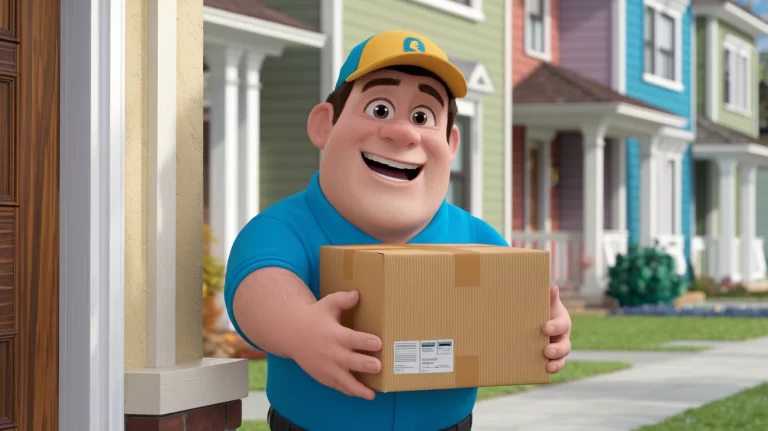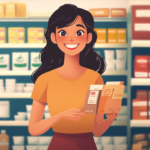You can boost conversion rates by up to 25% and drive real results in your B2B marketing strategy by leveraging data and analytics to create a personalized approach that addresses clients’ pain points and delivers targeted solutions. By mapping the client journey, you can identify touchpoints that influence decisions and tailor your messaging for maximum impact. Seamlessly engaging with potential clients through live chat, triggering messages, and enticing offers can also drive conversions. To propel your business forward, learn how to craft targeted email campaigns, optimize onboarding experiences, and leverage pop-ups to activate clients and fuel growth.
Key Takeaways
-
Map the client’s journey to identify touchpoints that influence decisions, driving a 25% increase in conversion rates.
-
Leverage data and analytics to create a personalized approach, addressing pain points and delivering targeted solutions.
-
Design a seamless experience using live chat and triggered messages, proactively engaging with potential clients and reducing friction.
-
Craft enticing offers that incentivize clients to take action, exchanging valuable resources and demonstrating expertise to drive conversion.
-
Implement targeted email campaigns with clear CTAs, segmenting content to specific audience groups and optimizing send times for maximum impact.
Client Journey and Personalization
By mapping your client’s journey, you can identify touchpoints that influence their decisions, and tailor your messaging to speak directly to their needs, ultimately driving a 25% increase in conversion rates.
This personalized approach is a key component of growth hacking B2B, as it allows you to understand your clients’ pain points and deliver targeted solutions.
By understanding the buyer’s journey, you can identify areas where your messaging falls flat and optimize your strategy for maximum impact.
For instance, you may find that clients are dropping off at a particular stage in the sales funnel. By addressing this pain point, you can create a more seamless experience, increasing the chances of conversion.
By leveraging data and analytics, you can continually refine your approach, ensuring that your messaging resonates with your target audience.
This data-driven approach to B2B marketing growth hacking enables you to make informed decisions, driving real results and propelling your business forward.
Welcome and Support Strategies

As you focus on crafting a stellar welcome and support strategy, you’ll want to prioritize designing a seamless experience that sets the tone for long-term customer relationships.
By doing so, you can increase customer satisfaction by up to 25% and reduce churn rates by 15%.
Next, we’ll explore how proactive live chat engagement can help you achieve these results and more.
Seamless Experience Design
You can substantially boost conversion rates by designing a seamless experience that picks up where the customer last interacted with your brand, whether through live chat, email, or triggered messages. This is especially pivotal in B2B growth hacking, where the goal is to create a continuous and personalized experience. To achieve this, initiate communication with potential clients through live chat or triggered messages, and use live chat to continue the conversation from where it left off, making it feel more personal and human-like.
|
Stage |
Goal |
Strategy |
|---|---|---|
|
Awareness |
Educate |
Send triggered messages with valuable content |
|
Interest |
Engage |
Use live chat to answer questions and provide demos |
|
Decision |
Convert |
Implement personalized workflows for growth marketing |
|
Retention |
Delight |
Segment the audience and set up personalized messages |
Proactive Live Chat Engagement
Proactively initiating live chat conversations can substantially enhance the customer experience, particularly when it’s driven by data and timed to coincide with specific user behaviors or pain points.
By doing so, you can identify and address potential issues before they escalate, reducing friction and increasing conversion rates.
For instance, you can trigger live chats when users spend a certain amount of time on a page, abandon their carts, or exhibit other behaviors that indicate confusion or uncertainty.
You can also use live chat to proactively offer support and resources, such as providing tutorials or demos, sharing relevant content, or offering personalized recommendations.
This not only improves the customer experience but also increases the chances of closing deals and building long-term relationships.
By leveraging data and analytics, you can optimize your live chat strategy to maximize its impact.
For example, you can identify the most effective chat triggers, optimize chat flow, and measure the ROI of your live chat efforts.
Enticing Offers and Conversion

When it comes to enticing offers and conversion, you’re likely looking for strategies that drive real results.
By implementing tactics like valuable resource exchange, you can establish mutually beneficial relationships with clients and boost conversion rates.
Now, let’s explore the key points that can help you achieve this, including targeted email campaigns and more.
Valuable Resource Exchange
By exchanging valuable resources, such as informative guides or product demos, with potential clients, businesses can establish mutually beneficial relationships that drive conversion.
You can implement pop-ups on your website to offer these resources in exchange for an email, increasing the chances of conversion. Additionally, you can use chatbots to collect potential client emails and send relevant PDF downloads, automating the process and streamlining conversion.
To take it a step further, automatically send the gathered lead information to your sales team’s CRM, ensuring a seamless shift and increasing the likelihood of conversion.
To boost conversion rates, create targeted offers that incentivize clients to take action. For instance, offer limited-time discounts or exclusive access to new features.
This will encourage potential clients to convert and become paying customers. By providing value upfront, you’re building trust and demonstrating your expertise, making it more likely that clients will choose your business over competitors.
Mutually Beneficial Relationships
You can establish mutually beneficial relationships with clients by crafting enticing offers that address their specific needs and pain points, ultimately driving conversion and fueling business growth.
By providing valuable resources, such as guides, product demos, or free trials, you can collect contact information or encourage engagement. Implementing pop-ups on your website can increase conversion chances by up to 25%. You can also use chatbots to collect potential client emails and send relevant PDF downloads, boosting conversion rates by automating the process and providing instant value.
To streamline the conversion process, automatically send gathered lead information to your sales team’s CRM, reducing response time.
By offering targeted offers and personalized messages based on clients’ interests, behaviors, and demographics, you can boost conversion rates by up to 30%. By focusing on mutually beneficial relationships, you can create a win-win situation that drives business growth and freedom.
Targeted Email Campaigns
Crafting targeted email campaigns with enticing offers can be a game-changer for your business, as it allows you to tap into the specific needs and pain points of your audience, driving conversions and ultimately, revenue growth. By implementing these campaigns, you can increase conversion rates by up to 25%, according to HubSpot.
But that’s not all – personalized email campaigns with relevant content and offers can lead to a 14% increase in conversion rates, as reported by MarketingSherpa.
To maximize the effectiveness of your email campaigns, keep the following strategies in mind:
Use segmentation to tailor email content to specific audience groups, resulting in a 50% increase in open rates and a 20% increase in click-through rates (Lyris).
Include a clear call-to-action (CTA) in your email campaigns to boost conversion rates by up to 28% (WordStream).
Send targeted email campaigns at the right time, such as during the decision-making stage, to increase conversion rates by up to 40% (Experian).
Implement personalized email campaigns with relevant content and offers to lead to a 14% increase in conversion rates (MarketingSherpa).
Use enticing offers to increase conversion rates by up to 25% (HubSpot).
Chatbots for Onboarding and Engagement
Leverage chatbots to kick-start the onboarding process, seamlessly introducing your company and its critical features to potential clients through brief, informative messages that drive engagement. You can use chatbots to provide basic information about your company and qualify potential clients with questions to accelerate user activation. By highlighting your product’s primary benefits, you can engage consumers and encourage them to make a payment, ultimately driving revenue.
Here’s how you can utilize chatbots for onboarding and engagement:
|
Goal |
Chatbot Strategy |
Benefits |
|---|---|---|
|
Introduce company |
Brief, informative messages |
Drive engagement |
|
Qualify potential clients |
Questions to qualify leads |
Accelerate user activation |
|
Highlight product benefits |
Emphasize primary benefits |
Encourage payment |
|
Boost activation rates |
Onboarding chatbots |
Enhance client experience |
|
Collect feedback |
Predefined or open-ended responses |
Identify growth opportunities |
Growth Marketing Emails and Automation
By automating targeted email campaigns, you’re able to precision-guide users through the customer journey, amplifying engagement and conversion rates.
This is especially vital in B2B, where lengthy sales cycles and complex decision-making processes require sustained nurturing.
By leveraging automation, you can tailor your approach to maximize impact.
Segment and personalize: Tailor content to specific personas, industries, or behaviors, increasing relevance and resonance.
Optimize send times: Schedule emails to land in inboxes at the most opportune moments, boosting open rates and clicks.
Automate follow-ups: Guarantee consistent, timely communication, reducing the risk of leads falling through the cracks.
Trigger behavioral emails: React to user actions, such as abandoned carts or trial sign-ups, with targeted, high-impact messaging.
Analyze and refine: Continuously monitor performance, identifying areas for improvement and optimizing campaigns for maximum ROI.
Pop-ups and Onboarding Experience
To tap into the full potential of your onboarding process, you can strategically deploy pop-ups that nudge clients towards completing key milestones, such as starting a free trial or demo.
By offering a free trial or demo, you can bring clients back and encourage them to invest in your product.
Implementing multi-channel campaigns that combine pop-ups with email newsletters can also boost conversion rates and turn registered users into paying customers.
To enhance the client onboarding experience, create targeted pop-ups that provide helpful resources and next steps guides.
This approach increases activation rates and reduces churn.
Design pop-ups that are contextual and relevant to the user’s journey, such as a pop-up that appears when a user is about to abandon their cart or leave the website.
Personalize pop-ups based on user behavior, demographics, or firmographics to increase their effectiveness and relevance to your target audience.
Proactive Engagement and Client Activation
You can substantially boost client activation rates by proactively engaging with them through targeted, personalized communication that addresses their pain points and concerns. This approach helps build trust, demonstrates your understanding of their challenges, and showcases your expertise. As a result, you’ll see a significant increase in client activation and retention.
Some strategies to help you achieve proactive engagement and client activation:
Set up regular check-ins: Schedule regular meetings or calls to guarantee clients are getting the most out of your product or service.
Use data to personalize communication: Analyze client behavior and tailor your communication to address their specific needs and concerns.
Offer targeted resources: Provide clients with relevant content, webinars, or training sessions that address their pain points.
Foster a sense of community: Create a community or forum where clients can connect, share experiences, and learn from each other.
Celebrate client successes: Recognize and celebrate clients’ achievements to build strong relationships and encourage loyalty.
Frequently Asked Questions
What Is B2B Growth Hacking?
You’re wondering what B2B growth hacking is? It’s a rapid experimentation process to grow your business fast, focusing on creative, cost-effective strategies to acquire users on a limited budget, relying on data to optimize campaigns and drive exponential growth.
What Are the 4 Stages of Growth Hacking?
You think you’re a growth hacking rockstar, but without a solid framework, you’re just winging it. Luckily, you’ve got the AARRR stages: Acquisition, Activation, Retention, and Revenue – the secret sauce to scaling your business and achieving rapid growth.
What Is an Example of a Growth Hacker Tactic?
You’re looking for a growth hacker tactic example? Try retargeting ads, which can boost conversions by 26% by targeting users who’ve visited your site but didn’t take action, giving you a second chance to seal the deal!
What Makes a Good Growth Hacker?
You want to know what makes a good growth hacker? It’s someone who combines marketing, product, and tech skills to drive rapid growth, leveraging data to experiment, optimize, and adapt, always focused on achieving impressive results.
Conclusion
You’ve implemented the growth hacking strategies, now it’s time to reap the rewards.
By personalizing the client journey, streamlining onboarding, and leveraging chatbots, you’ll see a significant boost in conversions.
Take, for instance, HubSpot, which saw a 25% increase in free trial sign-ups after implementing a personalized welcome email series.
By putting these strategies into action, you’ll be well on your way to driving real results and explosive growth for your B2B company.









